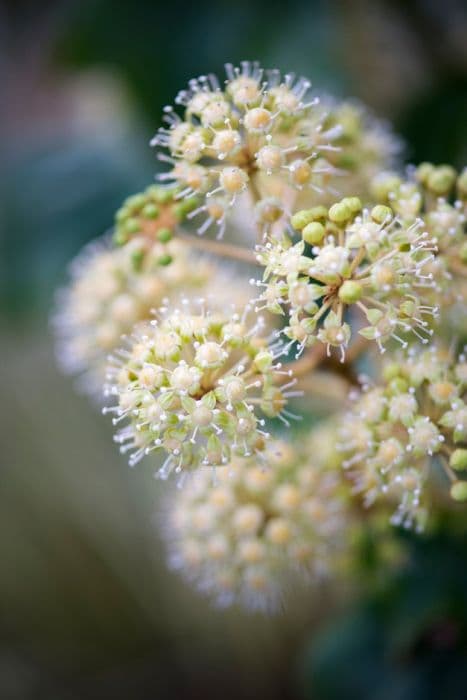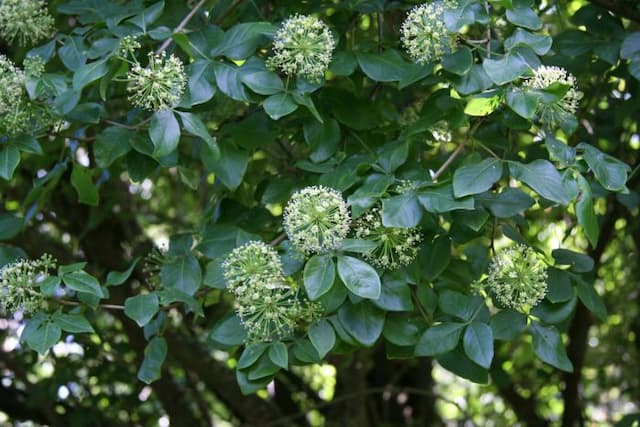Toothed Lancewood Pseudopanax ferox

ABOUT
The Toothed Lancewood, known by its common name, is a distinct and eye-catching plant. It boasts a striking appearance due to its tough, leathery leaves which are narrow and elongated. The leaves are concentrated towards the top of the plant, giving it a tufted look. What's particularly interesting about the leaves of the Toothed Lancewood is their fierce, tooth-like edges. The young leaves often have a dark or reddish color, which adds to the plant's dramatic visual impact. As the Toothed Lancewood matures, its leaves evolve in texture and shape, becoming smoother and changing their orientation to become more horizontal than vertical. This progression creates an intriguing contrast between the various stages of growth. The leaves arrange themselves in a spiral pattern around the central supportive structure, adding to the plant's unique architectural form. The overall appearance of the Toothed Lancewood is quite sculptural and textured, making it a remarkable and unusual specimen in any setting where it's found. Its durable and visually appealing features are what set it apart from other plants and draw attention from those who appreciate unusual botanical wonders.
About this plant
 Names
NamesFamily
Araliaceae
Synonyms
Toothed Lancewood, Fierce Lancewood, Savage Lancewood
Common names
Nothopanax ferox, Panax ferox
 Toxicity
ToxicityTo humans
The plant commonly known as Toothed Lancewood is not widely recognized for having notable toxic effects on humans. There is limited information regarding its toxicity, and it is not typically listed among commonly poisonous plants. However, although not known to be significantly toxic, it is generally advised not to ingest parts of this or any unknown plants due to the possibility of individual allergic reactions or gastrointestinal discomfort.
To pets
The Toothed Lancewood does not have a well-documented history of toxicity in pets, such as dogs or cats. There is a lack of specific information regarding its effects if ingested by pets. As with humans, it is generally recommended to prevent pets from consuming parts of unknown plants to avoid potential allergic reactions or gastrointestinal issues that could occur with the ingestion of plant material that is not part of their typical diet.
 Characteristics
CharacteristicsLife cycle
Perennials
Foliage type
Evergreen
Color of leaves
Green
Height
15 feet (4.6 meters)
Spread
8 feet (2.4 meters)
Plant type
Shrub
Hardiness zones
8
Native area
New Zealand
Benefits
 General Benefits
General Benefits- Aesthetic Appeal: Pseudopanax ferox, commonly known as fierce lancewood, has a unique and striking appearance which adds visual interest to gardens and landscapes.
- Native Habitat Support: Being native to New Zealand, it contributes to the regional biodiversity, offering habitat and food for native fauna.
- Drought Tolerance: Once established, fierce lancewood is drought tolerant, making it suitable for xeriscaping and low-water-use gardens.
- Wind Resistance: The tree's sturdy structure enables it to withstand strong winds, a trait that is beneficial in exposed or coastal planting schemes.
- Ornamental Fruit: Fierce lancewood produces small, ornamental fruit that can add an additional decorative element to the garden setting.
- Shade Provider: Mature trees can provide shade in gardens and public spaces, creating cool areas during sunny days.
- Cultural Significance: In its native New Zealand, Pseudopanax ferox is valued for its cultural significance to the Māori people.
- Adaptability: It can adapt to a range of soil types, provided they are well-draining, making it versatile for different landscape uses.
- Architectural Plant: The architectural form of fierce lancewood makes it an excellent choice for modern and minimalist garden designs.
- Easy Care: Pseudopanax ferox generally requires minimal maintenance once established, which is ideal for gardeners looking for low-maintenance plants.
- Erosion Control: Its root system can help stabilize soil, which is particularly beneficial in areas prone to erosion.
- Evergreen: Being an evergreen, it provides year-round foliage and interest in the garden or landscape.
 Medical Properties
Medical Properties- This plant is not used for medical purposes.
 Air-purifying Qualities
Air-purifying QualitiesThis plant is not specifically known for air purifying qualities.
 Other Uses
Other Uses- The toothed lancewood's young spiky leaves have been historically used as a natural deterrent to keep away small animals or livestock from gardens or specific areas.
- Durable timber from mature toothed lancewood trees has been utilized in creating walking sticks and tool handles due to its strength and rigidity.
- The unique and striking appearance of toothed lancewood makes it a sought-after ornamental for themed gardens, particularly prehistoric or native New Zealand settings.
- Younger toothed lancewood trees have been used in traditional Maori carving practices before they fully mature and lose their juvenile spiky form.
- The bark of toothed lancewood has been utilized as a natural dye for fabrics, producing muted and earthy tones.
- Toothed lancewoods can be planted as a natural windbreak because of their ability to withstand strong winds once mature.
- The wood of the toothed lancewood can be used in crafting musical instruments like flutes or woodwinds, where dense and durable wood is preferred.
- Its resilience to coastal conditions makes toothed lancewood suitable for planting in challenging coastal environments to help prevent soil erosion.
- The toothed lancewood's unique shape and foliage have been used by artists and photographers as a dramatic subject or backdrop in their work.
- Sections of the toothed lancewood trunk have been creatively repurposed into rustic outdoor furniture pieces such as benches or tables.
Interesting Facts
 Feng Shui
Feng ShuiThe Toothed Lancewood is not used in Feng Shui practice.
 Zodiac Sign Compitability
Zodiac Sign CompitabilityThe Toothed Lancewood is not used in astrology practice.
 Plant Symbolism
Plant Symbolism- Resilience: The Pseudopanax ferox, commonly known as the Toothed Lancewood or Fierce Lancewood, can endure harsh environments, symbolizing the ability to withstand adversity.
- Transformation: As the Toothed Lancewood matures, its leaves change dramatically in shape, representing personal growth and transformation over time.
- Protection: The plant's tough, tooth-like leaves can symbolize protection from harm or shielding from negative influences.
- Adaptability: Reflecting its capacity to adapt to different stages of growth, the Toothed Lancewood embodies the quality of adaptability in life's circumstances.
- Uniqueness: With its distinct and peculiar appearance, especially in juvenile stages, it represents individuality and the celebration of being different.
 Water
WaterThe Toothed Lancewood should be watered when the top inch of the soil feels dry to the touch. Typically, this could mean watering approximately once every week to ten days; however, the exact frequency depends on factors such as temperature, humidity, and light conditions. It is important not to overwater as this can lead to root rot. When watering, use enough water to moisten the soil thoroughly until it just starts to drain from the bottom of the pot. Typically, watering with around 16 to 32 ounces of water should be sufficient for a medium-sized pot, with adjustments based on the plant's size and environmental conditions.
 Light
LightThe Toothed Lancewood thrives best in bright, indirect light. It can tolerate some direct sunlight but should be protected during the hottest parts of the day to prevent leaf scorch. A north-facing or east-facing window is an ideal spot for this plant, providing it with the gentle morning light and avoiding the strong afternoon sun which can be too harsh.
 Temperature
TemperatureThe Toothed Lancewood prefers temperature conditions ranging between 50°F and 85°F. It should not be subjected to temperatures below 50°F as it may damage the plant. The ideal temperature range is between 60°F and 75°F for optimal growth.
 Pruning
PruningPruning the Toothed Lancewood should be done to remove any dead or damaged leaves and to maintain a desired shape. Pruning is best done in the spring before new growth begins. It doesn't require frequent pruning; once a year is typically enough unless there are visible signs of damaged foliage that needs to be removed.
 Cleaning
CleaningAs needed
 Soil
SoilThe fierce lancewood thrives in well-draining soil with a mix of loam, perlite, and compost. Aim for a slightly acidic to neutral pH of about 5.5 to 7 for optimal growth.
 Repotting
RepottingFierce lancewood should be repotted approximately every two to three years or when it outgrows its pot, which is less frequent than many houseplants due to its slower growth.
 Humidity & Misting
Humidity & MistingThe fierce lancewood prefers moderate to high humidity levels, ideally between 50-70%, which mimics its natural forest environment.
 Suitable locations
Suitable locationsIndoor
Place fierce lancewood in bright, indirect light indoors; water when topsoil is dry.
Outdoor
Plant fierce lancewood in dappled shade; protect from strong winds.
Hardiness zone
8-11 USDA
 Life cycle
Life cyclePseudopanax ferox, commonly known as Toothed Lancewood, begins its life cycle as a seed, which germinates to produce a small, spiky juvenile with lance-like leaves. The juvenile stage can last for several years, during which the plant slowly grows, maintaining its distinctive serrated foliage. After this period, the lancewood undergoes a remarkable transformation to its adult phase, characterized by a change in leaf shape to broader, less toothed leaves and the development of a branching habit. Adult lancewoods then produce inflorescences which are small, inconspicuous, and typically greenish, followed by the development of purple-black berries. These berries contain seeds which are then dispersed by birds and, once fallen to the ground in a suitable environment, can germinate to begin the next generation. The plant’s lifespan can extend over several decades, during which it may go through a number of flowering and fruiting cycles.
 Propogation
PropogationPropogation time
Spring-Early Summer
When propagating the Pseudopanax ferox, commonly known as the Toothed Lancewood, the most popular method is through seed germination. Optimal propagation time is generally in the spring when temperatures are mild, which supports the growth of seedlings. To propagate by seed, one must first collect the seeds from ripe berries. The collected seeds should then be sown in well-draining soil mix and lightly covered with soil. Seedlings can take several weeks to germinate, so patience is required. Once they have sprouted and grown to a manageable size, the young plants can be transplanted into individual pots or directly into the ground in their permanent location. It’s important to ensure that they are not subjected to extreme temperatures and that they receive adequate water, without becoming waterlogged, to establish a strong root system.









